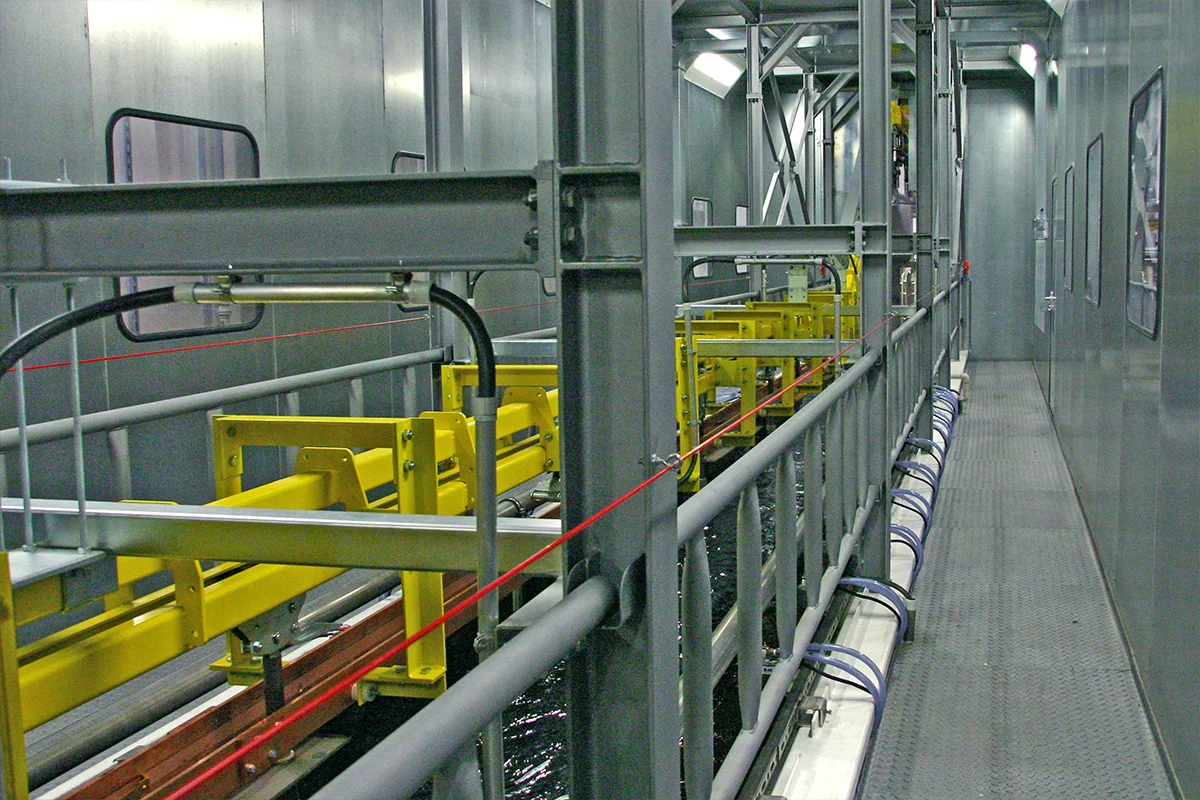
Clear records
history record

Products
Contact
Electrophoretic Tank
Electrophoretic Tank
I. Introduction
The electrophoretic tank plays a vital role in industries such as automotive, electronics, home appliances, metal processing, construction, hardware, medical devices, and aerospace. It enhances product quality and performance and is suitable for various electrophoretic equipment.
II. Application Areas
1. Automotive Manufacturing
Body Coating: Used for primer coating, providing corrosion resistance and adhesion.
Component Coating: Applied to frames, chassis, etc., enhancing corrosion resistance and durability.
2. Home Appliance Manufacturing
Exterior Coating: Used for refrigerators, washing machines, etc., improving appearance and durability.
Internal Component Coating: Used for brackets, panels, etc., providing corrosion protection.
3. Metal Products
Hardware Tools: Applied to wrenches, pliers, etc., enhancing corrosion resistance and durability.
Building Materials: Used for steel windows, door frames, etc., providing corrosion resistance and decorative effects.
4. Electronic Products
Exterior Coating: Applied to mobile phones, computers, etc., improving appearance and durability.
Internal Component Coating: Used for heat sinks, brackets, etc., providing corrosion protection.
5. Industrial Equipment
Mechanical Parts: Applied to pumps, valves, etc., enhancing corrosion resistance and durability.
Conveying Equipment: Used for conveyor belts, rollers, etc., providing corrosion protection.
6. Furniture Manufacturing
Metal Furniture: Applied to tables, chairs, cabinets, etc., improving appearance and durability.
Outdoor Furniture: Used for garden chairs, tables, etc., providing corrosion protection.
7. Aerospace
Aircraft Components: Applied to fuselages, engines, etc., enhancing corrosion resistance and durability.
Spacecraft Components: Used for satellites, rockets, etc., providing corrosion protection.
8. Medical Devices
Surgical Instruments: Applied to scissors, pliers, etc., enhancing corrosion resistance and durability.
Medical Equipment: Used for beds, wheelchairs, etc., providing corrosion protection.
III. Technical Overview
1. Basic Principles
Electrochemical Deposition: The workpiece is immersed in an electrophoretic tank, where charged coating particles migrate under a direct current electric field and deposit onto the workpiece surface, forming a dense coating.
2. Core Process Flow
Electrophoretic Tank: The workpiece is immersed in the tank, which contains electrophoretic paint.
Electrophoretic Process: When electricity is applied, paint particles deposit uniformly on the workpiece surface under the influence of the electric field.
Voltage and Time Control: Adjusted according to the material and coating requirements of the workpiece.
IV. Technical Advantages
High-Resolution Separation: The electrophoretic tank efficiently separates different components in complex samples.
High Sensitivity: Capable of detecting trace samples, suitable for low-concentration sample analysis.
Ease of Operation: The equipment is easy to operate, with a high degree of automation, reducing human error.
Cost Efficiency: Compared to other separation technologies, electrophoretic tank equipment has lower acquisition and operational costs.
V. Development Trends
Miniaturization: The advancement of microfluidic electrophoresis technology enables smaller equipment, reducing sample and reagent consumption.
High Throughput: Development of high-throughput electrophoretic tanks to meet large-scale sample analysis demands.
Automation and Intelligence: Increased automation and intelligent control reduce human intervention and improve experimental efficiency.
Multifunctional Integration: Integration of multiple functions such as separation, detection, and data analysis to enhance efficiency.
New Material Applications: Use of advanced materials, such as nanomaterials, to improve separation performance and equipment durability.
Green and Eco-Friendly: Development of environmentally friendly reagents and consumables to minimize environmental impact.
Data Analysis and Informatization: Integration of big data and artificial intelligence to enhance data analysis and result interpretation.
High-Sensitivity Detection: Improved sensitivity to meet the needs of low-concentration sample analysis.










